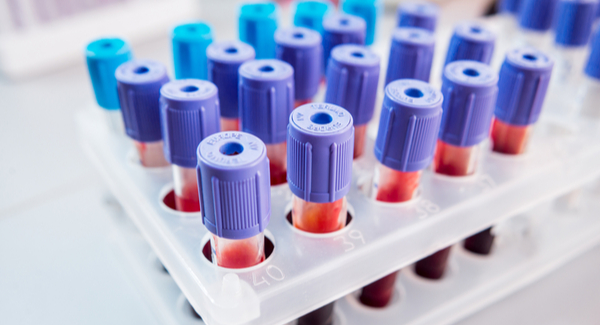Lupus Tests
Learn about tests used to diagnose and monitor lupus.
By Mary Anne Dunkin | June 27, 2022
Diagnosing lupus can be a long process. Symptoms are often different for different people, they may come and go or change over time, and they often overlap with those of other diseases. No single lab test or imaging test can produce a definite diagnosis. But if you have signs or symptoms that indicate lupus — for example, fatigue, fever, joint pain and swelling, mouth sores, a butterfly-shaped rash on your face, chest pain, headaches and memory loss — there are a number of tests your doctor may choose from to confirm the diagnosis. Different tests can also help your doctor determine the effects lupus is having on your body.
Blood tests
- Erythrocyte sedimentation rate (ESR or sed rate). The ESR test can gauge how much inflammation is in your body by measuring how quickly red blood cells (erythrocytes) separate from other cells in the blood and collect as sediment (sed) in the bottom of a test. A high sed rate could indicate lupus or another inflammatory disease.
- C-Reactive Protein (CRP). CRP is a protein produced by the liver that signals inflammation. High CRP levels are common in lupus and other inflammatory diseases.
- Complete blood count (CBC). This test measures the number of red and white blood cells and platelets. It also gauges the amount of hemoglobin, a protein in your red blood cells that transports oxygen to the body’s organs and tissues and carbon dioxide from your organs and tissues back to your lungs. Low hemoglobin could indicate anemia, which is common in lupus. Low white blood cells or platelet counts may also be a sign of lupus.
- Antinuclear antibody (ANA). These autoantibodies are proteins that attack your body’s own tissues. The presence of ANAs indicate an autoimmune condition, including lupus. Most people with lupus have a positive ANA; however, there are other possible reasons for a positive ANA, so the result in itself does not confirm a lupus diagnosis. If you have a positive ANA test, your doctor may order further tests for these specific antibodies:
- Anti double-stranded deoxyribonucleic acid (Anti-dsDNA), an antibody against the body’s genetic material. A positive result is generally specific to lupus.
- Anti-Sm, an antibody that may occur in people with lupus, often without anti-dsDNS.
- Anti-U1 ribonucleoprotein (RNP), an antibody that by occurs in autoimmune diseases, including lupus and mixed connective tissue disease.
- Anti-Ro/SSA and anti-La/SSB, antibodies to molecules in the cells’ nuclei. The presence of these antibodies, which are common in lupus, are associated with lupus complications or lupus-related conditions.
- Antiphospholipid antibodies are antibodies to the phosphorus-fat components of your cell membranes, which occur in about a third of people with lupus.
Kidney function tests. Your doctor may order blood tests to measure how well your kidneys are functioning and help diagnose lupus-related kidney disease (lupus nephritis). These tests include:
- Blood urea nitrogen (BUN), which measures the amount of urea nitrogen, a bodily waste product, in your blood.
- Serum creatinine assessment, which helps determine how well your kidneys are filtering creatinine, another bodily waste product, out of your blood.
Urine tests. These can be useful for diagnosing lupus nephritis. They include:
- Urinalysis, to check for increased protein levels or read blood cells, which could indicate lupus-related damage to the kidneys.
- Protein and creatinine test, which help your doctor determine if lupus has affected your kidneys. This may be performed as a single tests or a series of tests over a 24-hour period.
Imaging Tests. Imaging tests help determine if lupus is affecting your heart or lungs. Two of the most common are:
- Chest X-ray. If lupus has affected your lungs, a chest X-ray may show gray areas that suggest inflammation or fluid in the lungs.
- Echocardiogram. An echocardiogram uses electrodes to check your heart rhythm and ultrasound technology to see how blood moves through your heart. An echocardiogram can help your doctor diagnose heart conditions related to lupus.
Biopsies. Lupus can affect many parts of your body. In some cases, a biopsy can be useful in making a diagnosis.
- Skin biopsy. Because lupus commonly affects the skin and can appear similar to other skin diseases, your doctor may take a small sample of skin and have it analyzed to determine if the cause is cutaneous (skin) lupus.
- Kidney biopsy. Your doctor may take a sample of kidney tissue through a needle or small incision to diagnose lupus-related kidney damage and to determine the best treatment for it.
Monitoring Lupus
Many of the same tests your doctor ordered to make the diagnosis may also be helpful in monitoring the disease and its response to treatment. For example, ESR or CRP tests may be used to measure inflammation. An increase could indicate more active disease, and a decrease might mean a treatment is working.
- Anti double-stranded DNA (dsDNA) tests can help measure the disease activity of lupus.
- Complement (C3, C4, and CH50). This test measures for “complement proteins.” They are part of the complement system, which work with the immune system to fight harmful invaders. C3 and C4 are most commonly tested. A CH50 test measures the amount and activity of all the major complement proteins. Low levels are associated with more active disease.

Stay in the Know. Live in the Yes.
Get involved with the arthritis community. Tell us a little about yourself and, based on your interests, you’ll receive emails packed with the latest information and resources to live your best life and connect with others.



